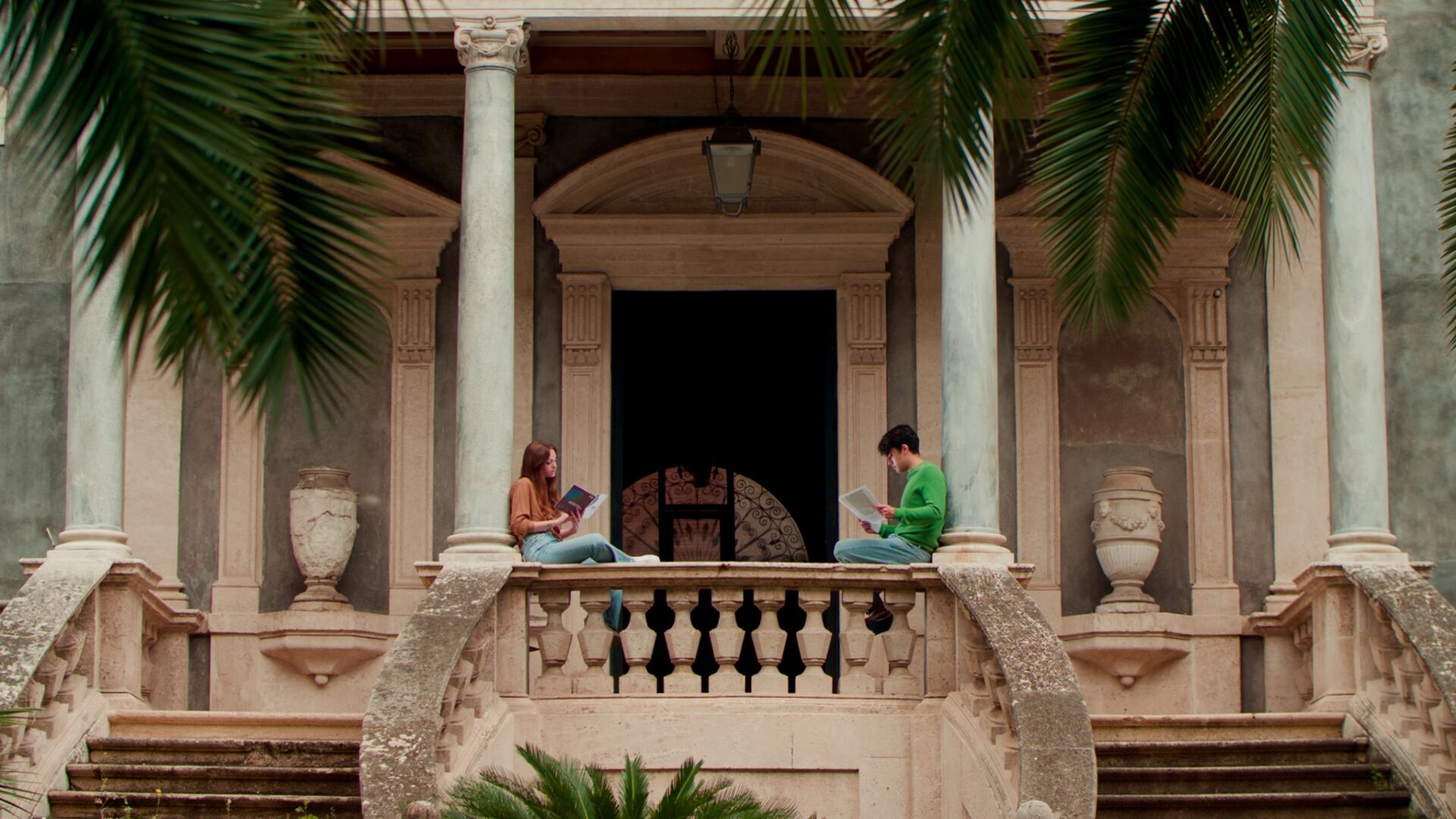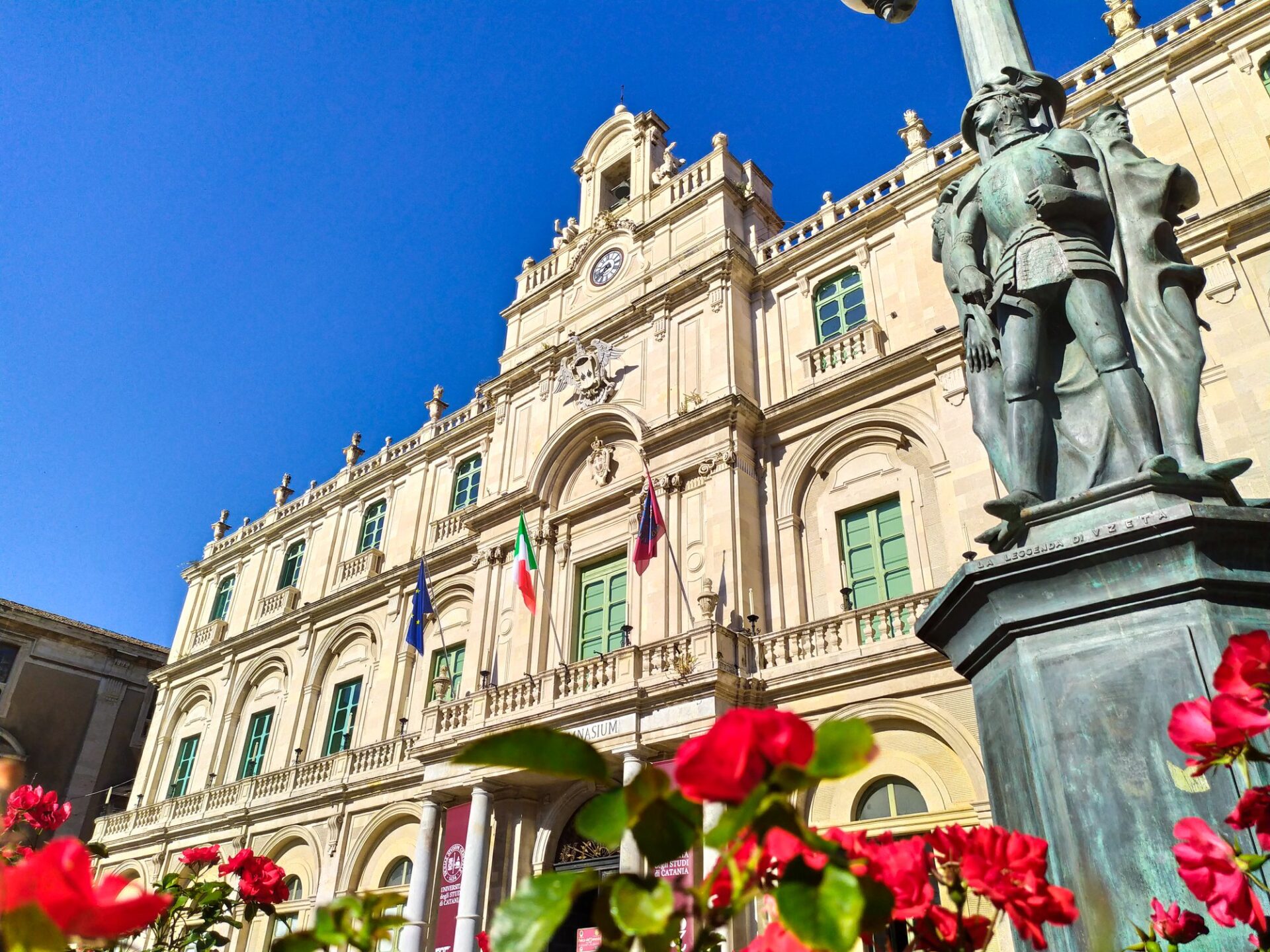Palazzo di Universita
The Palazzo di Universita and its beautiful homonym piazza lie a few steps west of Piazza Vincenzo Bellini. In October 1434 Alfonso V of Aragon decided to establish the University of Catania. It was the beginning of the history of the first Sicilian university which was authorized by Pope Eugene IV, with a bull of 18 April 1444 that approved the constitution of the Studium Generale Siciliae.
The Palazzo degli Studi could only arise in a central and prestigious area. What could be better than that very first stretch via Etna, a few steps from the sea and the Duomo, right where most of the life of the people of Catania and of those who came to visit took place?
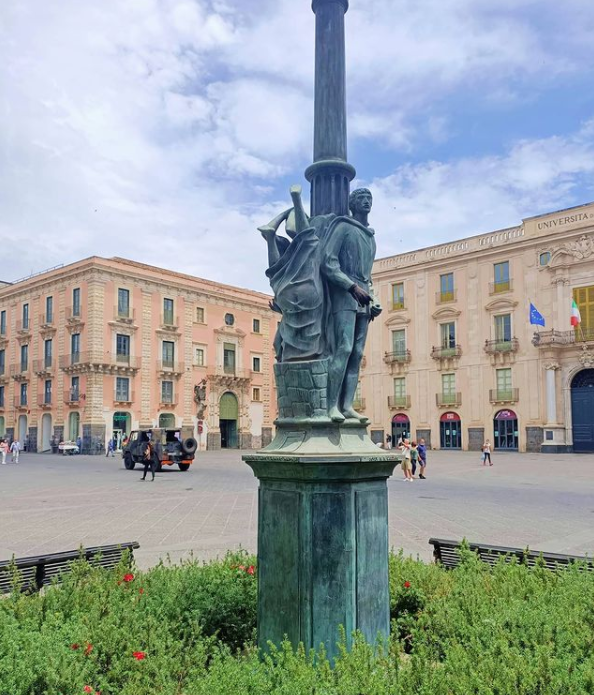

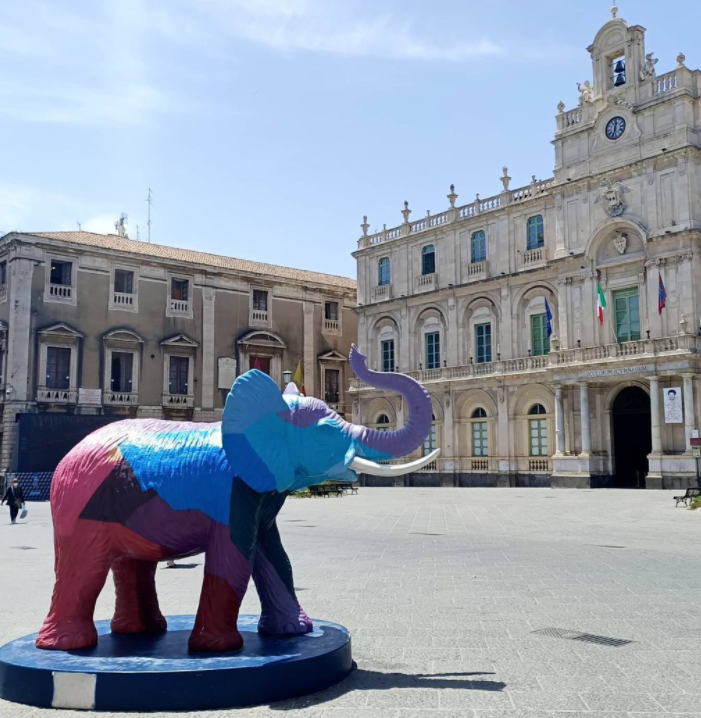
The University Building could not resist the destructive force of the 1693 earthquake and its reconstruction began three years later, starting from the rubble left by the tragedy. Giovan Battista Vaccarini took over the task of reconstruction in 1730.
The results of his projects are the ones we admire today on the left of the square going up Via Etnea. Vaccarini had thought of an elegant and functional work at the same time and started from that very famous internal courtyard, conceived as a cloister, with a design made of pebbles and framed by a two-story portico made of arches and columns.
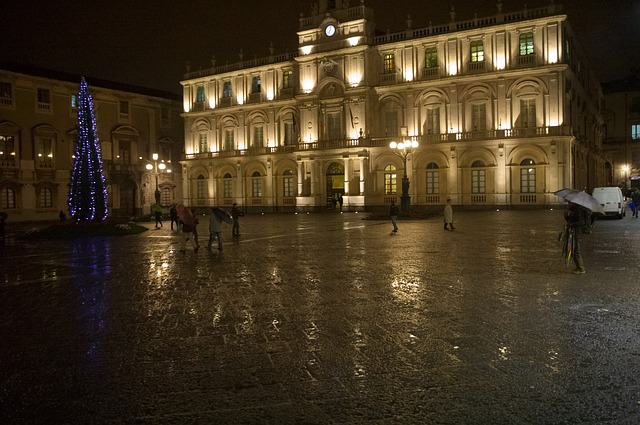
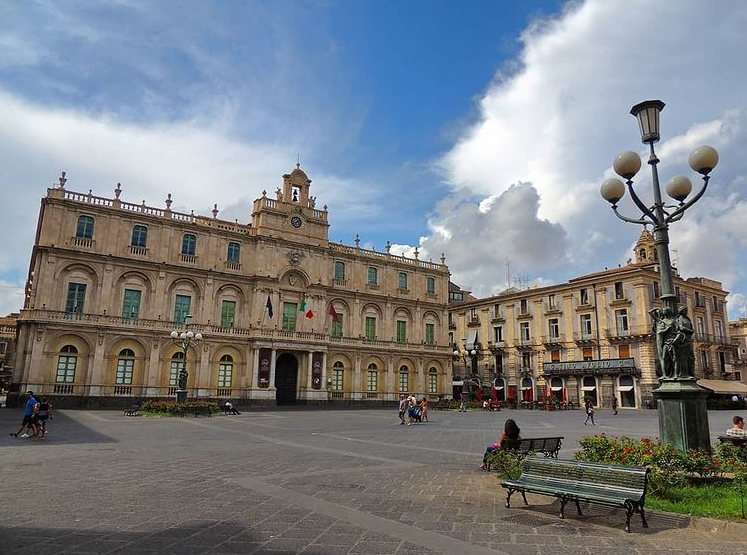
Then it was the turn of Giovan Battista Piparo from Catania, the artist responsible for the frescoes of the first floor of what we as the Aula Magna, which is characterized by walls completely covered with precious damask, while on the wall that acts as a background to the chair there is a tapestry which bears the coat of arms of the Aragon dynasty.
The façade of the University Palace has undergone many changes over the years, but the one carried out by the architect Mario Di Stefano, after the earthquake of 1818 is one that caused some damage to the facade. It should be noted that the building, which once housed all the Faculties, is built on an entire block and, originally, its doors allowed access to the cloister from all four sides.
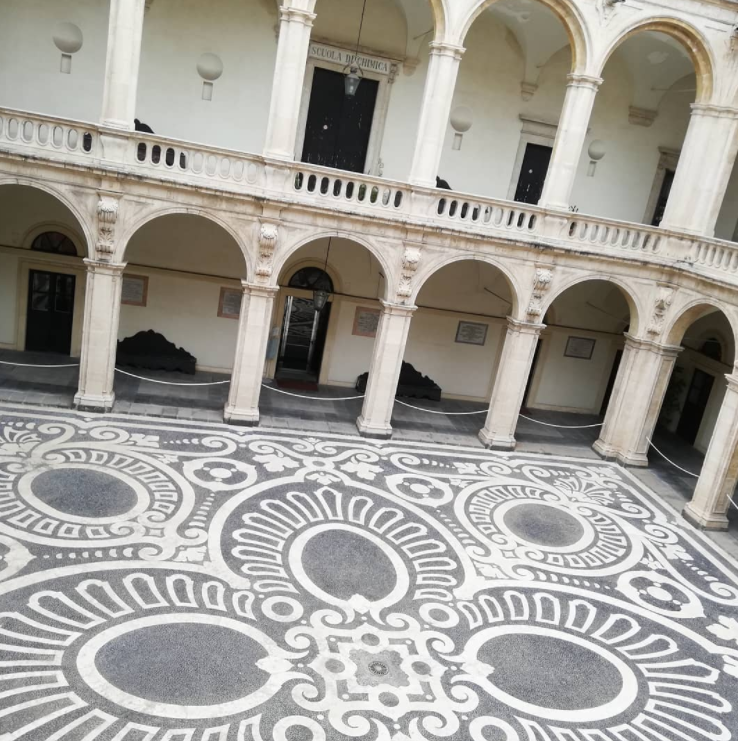
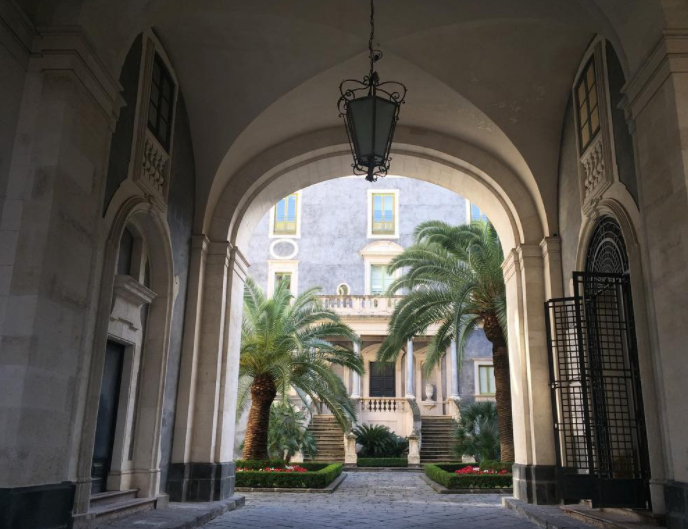
At the Catania University, the lessons began on October 19, 1445, the teachers at that time were only six and while the building was being built, students and teachers were welcomed in what is now known as the Palazzo del Seminario dei Clierici in Piazza Duomo.
Today in Piazza Università together with the Rectorate and its offices, there is also the University Library, a place full of manuscripts and autographed letters boasting a collection of over 200,000 volumes which scholars from all over the world access.
